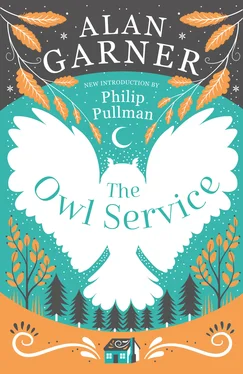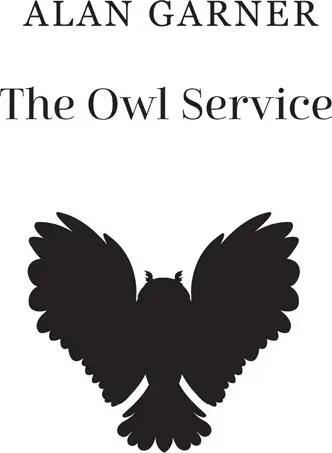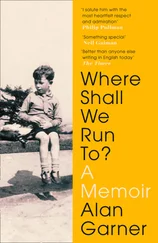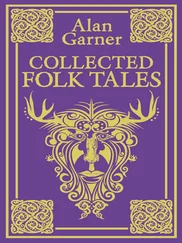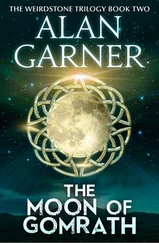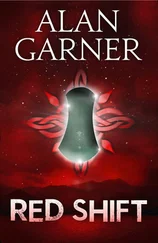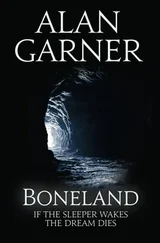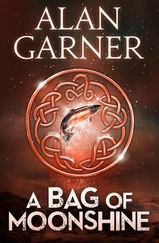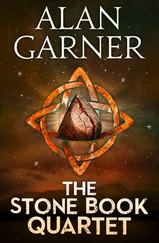
A BAG OF MOONSHINE
BONELAND
ELIDOR
RED SHIFT
THE LAD OF THE GAD
THE MOON OF GOMRATH
THE OWL SERVICE
THE STONE BOOK QUARTET
THE WEIRDSTONE OF BRISINGAMEN

First published in Great Britain by William Collins Sons & Co. Ltd 1967
This edition published by HarperCollins Children’s Books in 2017
HarperCollins Children’s Books is a division of HarperCollins Publishers Ltd,
HarperCollins Publishers
1 London Bridge Street
London SE1 9GF
The HarperCollins website address is:
www.harpercollins.co.uk
Text copyright © Alan Garner 1967
Introduction copyright © Philip Pullman 2017
Decorations from the original plates by Griselda Greaves
The author acknowledges with thanks the use of the following copyright material:
The Bread of Truth by R. S. Thomas (Rupert Hart-Davis);
The Mabinogion : translated by Gwyn Jones and Thomas Jones (J. M. Dent & Sons); The Radio Times , The British Broadcasting Corporation
Cover design by studiohelen.co.uk
A catalogue copy of this book is available from the British Library
All rights reserved under International and Pan-American Copyright Conventions. By payment of the required fees, you have been granted the non-exclusive, non-transferable right to access and read the text of this e-book on-screen. No part of this text may be reproduced, transmitted, down-loaded, decompiled, reverse engineered, or stored in or introduced into any information storage and retrieval system, in any form or by any means, whether electronic or mechanical, now known or hereinafter invented, without the express written permission of HarperCollins.
Source ISBN: 9780007127894
Ebook Edition © 2017 ISBN: 9780007539055
Version: 2019-06-26
“Garner writes books that really matter, books driven by powerful forces within himself, our history, our language, our mythology, our world.”
David Almond
“Alan Garner is indisputably the great originator, the most important British writer of fantasy since Tolkien, and in many respects better than Tolkien, because deeper and more truthful. His work is where human emotion and mythic resonance, sexuality and geology, modernity and memory and craftsmanship meet and cross-fertilise. Any country except Britain would have long ago recognised his importance, and celebrated it with postage stamps and statues and street-names. But that’s the way with us: our greatest prophets go unnoticed by the politicians and the owners of media empires. I salute him with the most heartfelt respect and admiration.”
Philip Pullman
“Alan Garner’s fiction is something special. Garner’s fantasies were smart and challenging, based in the here and the now, in which real English places emerged from the shadows of folklore, and in which people found themselves walking, living and battling their way through the dreams and patterns of myth.”
Neil Gaiman
“The power and range of Alan Garner’s astounding talent has grown with every book he’s written.”
Susan Cooper
“Remarkable … a rare imaginative feat, and the taste it leaves is haunting.”
Observer
“In his earlier novels, The Weirdstone of Brisingamen , The Moon of Gomrath and Elidor , Garner used the successful formula of the spilling of the twilight world of ancient legend into the present day. Here he uses the formula again, with an added depth, and even more compulsive terror-haunted beauty.”
Financial Times
For Cinna
—The owls are restless.
People have died here,
Good men for bad reasons,
Better forgotten.—
R. S. Thomas
I will build my love a tower
By the clear crystal fountain,
And on it I will build
All the flowers of the mountain.
Traditional
Possessive parents rarely live long enough
to see the fruits of their selfishness.
Radio Times (15.9.65)
Contents
Cover
Title Page
Books by Alan Garner
Copyright
Praise
Dedication
Epigraph
Author’s Note
Introduction
Chapter 1
Chapter 2
Chapter 3
Chapter 4
Chapter 5
Chapter 6
Chapter 7
Chapter 8
Chapter 9
Chapter 10
Chapter 11
Chapter 12
Chapter 13
Chapter 14
Chapter 15
Chapter 16
Chapter 17
Chapter 18
Chapter 19
Chapter 20
Chapter 21
Chapter 22
Chapter 23
Chapter 24
Chapter 25
Chapter 26
Chapter 27
Postscript
Keep Reading
About the Author
About the Publisher
I am indebted to Betty Greaves, who saw the pattern; to Professor Gwyn Jones and Professor Thomas Jones, for permission to use copyright material in the text; and to Dafydd Rees Cilwern, for his patience.
A. G
When this book was first published, in 1967, I was an undergraduate at Oxford reading English, and I remember the sensation it caused – not among the academics, for whom children’s literature was an area of no interest whatsoever, but among those of us who had arrived at university with our heads already harbouring an unhealthy fascination with hobbits and elves and so on. Tolkien was all the rage, but we weren’t allowed to take an academic interest in that sort of thing because fantasy was as un-literary, as looked down on, as an enthusiasm for books that children read. The fantasy fans had already read and enjoyed the three earlier books by Alan Garner, The Weirdstone of Brisingamen (1960), The Moon of Gomrath (1963) and Elidor (1965), but The Owl Service was something new, and tougher, and truer than anything we’d yet seen.
Like the earlier books, and unlike The Lord of the Rings , The Owl Service is set in our world, the “real” world as we call it. The fantastical elements irrupt into everyday life: the realistic settings and characters experience and are altered by their encounters with the mythical or the other-worldly. This way of writing a story is sometimes known as “low fantasy”, in contrast to the “high fantasy” of the Tolkien sort, where everything is made up. I think it’s a useful distinction, and I vastly prefer the low to the high.
What distinguishes The Owl Service from its predecessors, and from pretty well anything else published for children until then, is something uncompromising in the telling. We have to keep our wits about us as we read: everything we need is there, and nothing we don’t need. A great deal of the text consists of dialogue, which is sharp and tense and brilliantly economical. As a way of revealing character, Garner’s dialogue is unsurpassed: we can almost see the patronising, unperceptive, well-intentioned and severely limited Clive, the nervy, quick-witted, imaginative, generous, rebellious Gwyn. Clive’s relationship with his stepdaughter, Alison, could hardly be better revealed than through his own words:
Читать дальше
